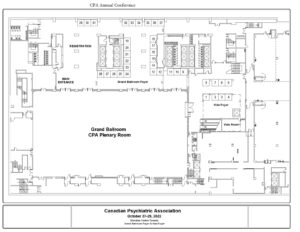PS03a – Prevalence of Mental Disorders Among People with Opioid Use Disorder in British Columbia: 1996 to 2021
Saturday, Oct. 21
14:30 – 15:30 (N/A)
Meeting Room: Finback (3rd floor – B Tower)
Angela Russolillo*, PhD; Fahmida Homayra, MSc; Kristen Morin, PhD; David Marsh, MD; Bohdan Nosyk, PhD
CanMEDS Roles:
- Scholar
At the end of this session, participants will be able to: 1) Describe the temporal change in prevalence of mental disorders among people with an opioid use disorder (OUD) in British Columbia; 2) Identify demographic characteristics of people with OUD and concurrent mental disorders; and 3) Discuss the importance of access to mental disorder treatment among people with an OUD.
Opioid use is a major public health issue and is robustly associated with a broad range of comorbid psychiatric disorders. For people with opioid use disorder (OUD), psychiatric comorbidities have been associated with worse clinical outcomes. Although the lifetime prevalence of psychiatric disorders among people with an OUD is generally high, there is considerable variability in reported rates across studies. Therefore, we estimate the prevalence of specific mental disorders among people with an OUD using population-level administrative data spanning over two decades in BC.
Using linked population-level administrative health data, we estimated the annual prevalence and temporal trends for mental disorders among people with an OUD between January 1, 1996, and August 31, 2021. Individuals were followed from their first indication of OUD until censoring (death, administrative loss to follow up, or August 31, 2021).
Among people aged 18 years and over with an OUD (n = 109, 372; period prevalence), 75.8% indicated a concurrent mental disorder during the observation period. People with an OUD and any other mental illness were predominately male (60.3%), with a median age of 37 (interquartile range [IQR] 28, 49) years. Of these 82,905 dually diagnosed people, 19,237 (23.2%), 10,093 (12.2%), and 7,121 (8.6%) had indications of major depression, schizophrenia, and bipolar disorder, respectively.
Our findings demonstrate a high prevalence of concurrent mental illness and emphasize the need for access to mental disorder treatment among people with an OUD. Estimating specific mental disorder prevalence is a pragmatic step toward informing clinical guidelines, service needs, and health system planning.
References:
- Jones CM, McCance-Katz EF. Co-occurring substance use and mental disorders among adults with opioid use disorder. Drug Alcohol Depen 2019;197:78–82.
- Prevalence of mental disorders among people with opioid use disorder: a systematic review and meta-analysis. Drug Alcohol Depen 2022;238:109551.

